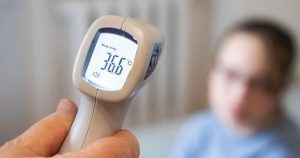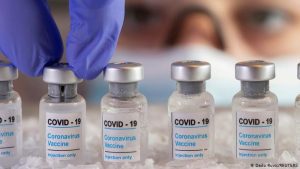
In Ukraine, as of Monday morning, 2,030 new cases of the coronavirus disease COVID-19 were recorded, with 5,131 people reported as recovered, and 61 patients died, said Minister of Health of Ukraine Maksym Stepanov.
“Some 2,030 new cases of coronavirus disease COVID-19 were recorded in Ukraine as of February 1, 2021. In particular, 71 children and 65 health workers fell ill. Also, over the past day, 1,103 people have been hospitalized, 61 deaths have been recorded, and 5,131 people recovered,” wrote Stepanov on his Facebook page on Monday morning.

The opening of the first five-star Sheraton hotel in Kyiv is scheduled for 2021.
“In 2021, Sheraton Hotels will continue on its transformation journey, with the brand expecting to showcase new guest experience programs and complete renovations in locations including Nashville, the United States; Toronto, Canada; Nice, France; Kyiv, Ukraine; and Xi’an, China,” according to a press release posted on January 28 by PRNewswire.
As reported, earlier in September 2020, the Board of Directors of the U.S. International Development Finance Corporation (DFC) approved the allocation of $27 million for building Sheraton Hotel in Kyiv.
The construction of the five-star Sheraton Kyiv Olympiysky hotel in the territory of the Olympiysky Stadium is being carried out by Construction Investment Company TM, which signed a hotel management agreement with the hotel operator Marriott Hotels & Resort.
According to the company’s website, Sheraton Kyiv Olympiysky is a 14-storey building with 196 rooms, 178 of which are standard rooms and deluxe rooms, 15 luxury rooms, two rooms for people with disabilities and one presidential room. The infrastructure includes an underground parking for 144 cars.
Construction Investment Company TM was founded in 2004, and its core business is construction of residential and non-residential buildings.
According to the unified public register, the founders of the company as of January 2021 were Telmox Limited LLC (50.5%), Wayall Limited LLC (35.5%) and Ihor Tarasulov (14%).
The charter capital is UAH 5 million.

President of Ukraine Volodymyr Zelensky has reported on the fulfillment of his election promise: this year Ukrainians will be able to get an affordable mortgage for housing at 7%.
“We promised to do everything in the program to make young Ukrainian families have a headache from just one question: what to choose – an apartment in the city or a country house,” the head of state recalled in a video message posted on his Facebook page on Friday morning. He noted that an important step has been taken this week on the way to this – the mortgage available for Ukrainians was launched at 7% per annum.
He noted that an important step has been taken this week on the way to this – the mortgage available for Ukrainians was launched at 7% per annum.
“I think this is a great victory. When someone tells you that in his time the indicators in the country were higher, he is not lying in this sense. Because two years ago the average mortgage rate in Ukraine was 21%. Now it will be seven. And already this year, Ukrainians – and, by the way, this applies not only to young families, but also to all our citizens – and so, this year they will be able to get an affordable mortgage for housing at 7%,” Zelensky said.

Ukraine has registered 5,181 new cases of COVID-19, 11,310 recoveries, and 128 deaths in the past 24 hours, Ukrainian Health Minister Maksym Stepanov said.
“Ukraine recorded 5,181 new COVID-19 cases on January 29, 2021. In particular, the virus was contracted by 218 children and 212 medical workers. Over the past day, 1,916 persons have been hospitalized, 128 have died, and 11,310 have recovered,” Stepanov said on Facebook.
Since the beginning of the pandemic, 1,211,593 people have been diagnosed with COVID-19 in Ukraine; 22,479 of them have died and 1,003,341 have recovered to date.

Prime Minister Denys Shmyhal says that Ukraine is currently signing or has already signed contracts for more than 30 million doses of COVID-19 vaccines.
“There will be enough vaccines for everyone this year. Today, we have contracts for more than 30 million vaccines that have actually been signed and are being signed,” Shmyhal said on the air of ICTV channel on Monday evening, January 25.
The prime minister also said that all the queues according to the national vaccination plan will be observed, and the vaccination itself will start in February.
“In the near future, Ukraine will receive one million doses of vaccine. Until the end of January, we expect the amount of COVAX vaccine […] there will be the first delivery of COVAX vaccine in the amount of 200,000 doses or more, in order to start emergency immediate vaccination,” Shmyhal said.

Pivdenny Commercial Sea Port (formerly Yuzhny, Odesa region), the largest seaport of Ukraine in terms of transshipment volume, increased cargo handling by 14.49% in 2020 compared to, to 61.665 million tonnes.
According to the information on the website of the Ukrainian Sea Ports Authority, in 2020, the port increased handling of export cargo by 20.17%, to 47.63 million tonnes, reduced handling of import cargo by 0.67%, to 7.212 million tonnes and transit cargo by 6.66%, to 6.477 million tonnes. Coastal cargo was handled 12.5 times more than in the previous year, 346,620 tonnes.
In terms of cargo nomenclature, in 2020, the seaport increased handling of liquid cargo by 23.9%, to 5.32 million tonnes, dry bulk cargo by 13.96%, to 51.743 million tonnes, and packaged goods by 10.53%, to 4.602 million tonnes.
Handling of containers for the specified period amounted to 243,790 TEU (more by 11.49%).
Pivdenny seaport was founded in 1978. It is located on the banks of the Adzhalyk estuary and is the deepest in Ukraine. The total length of the berths is about 2.6 km.